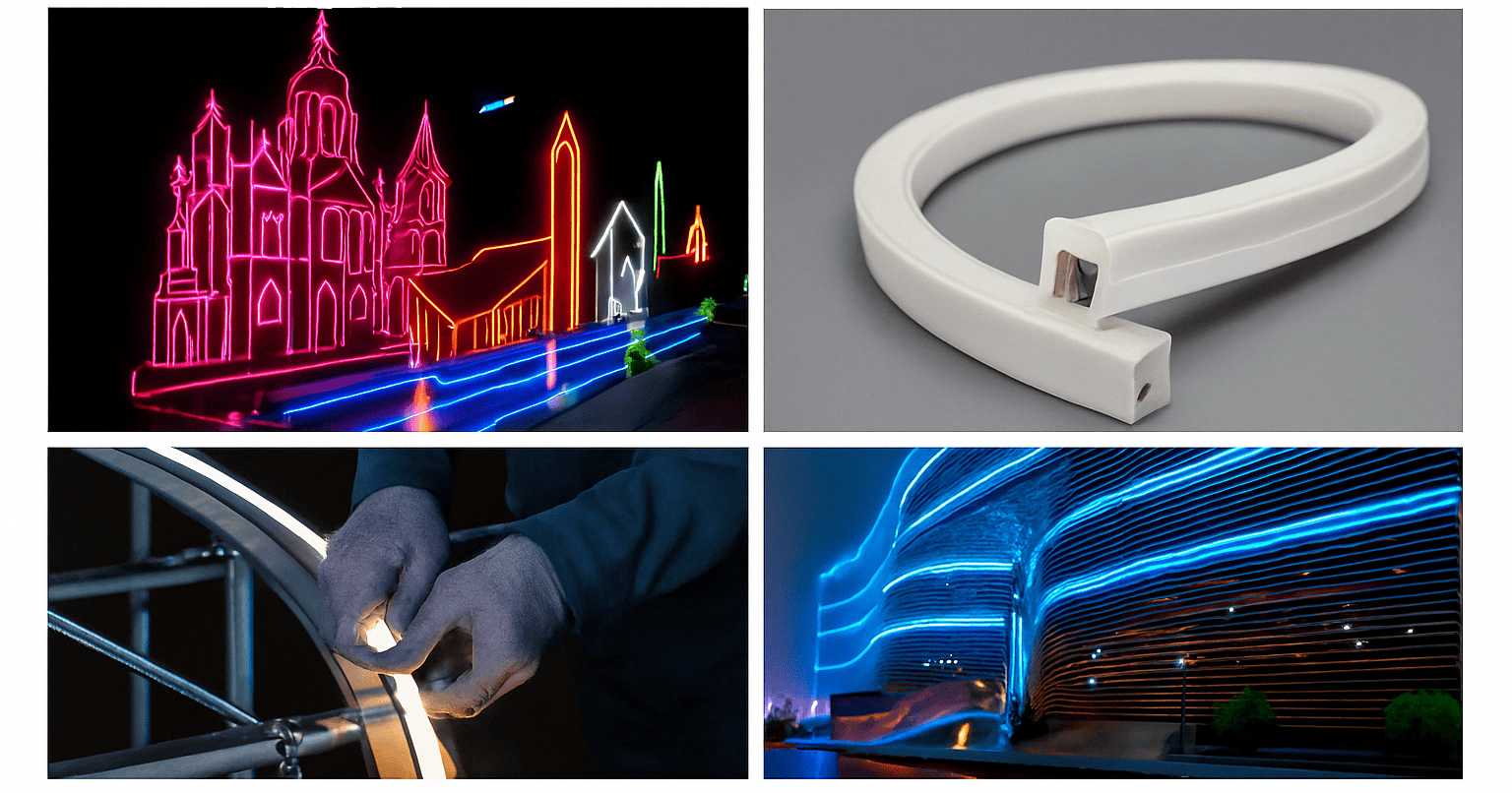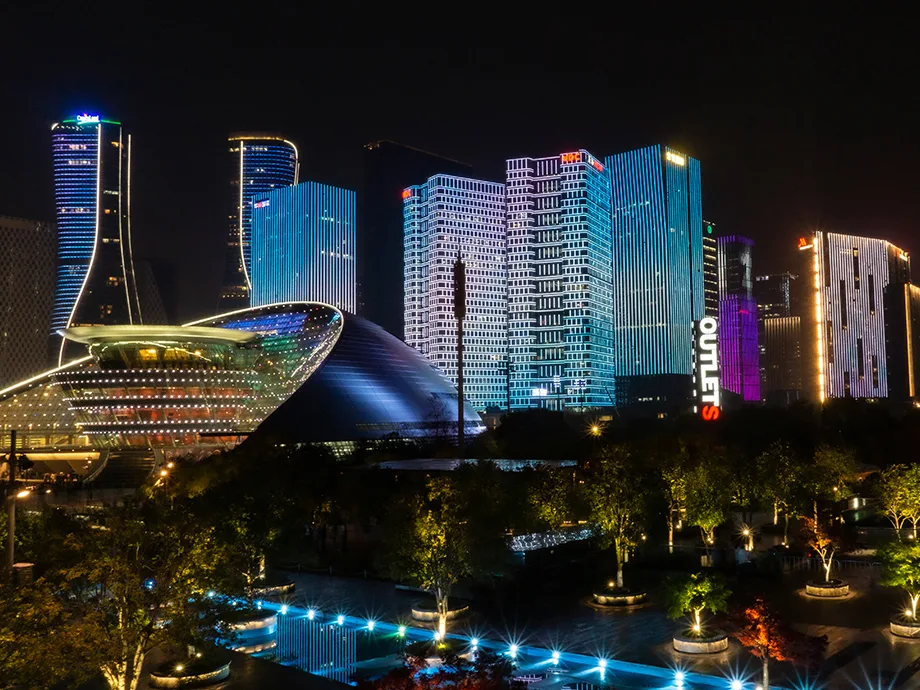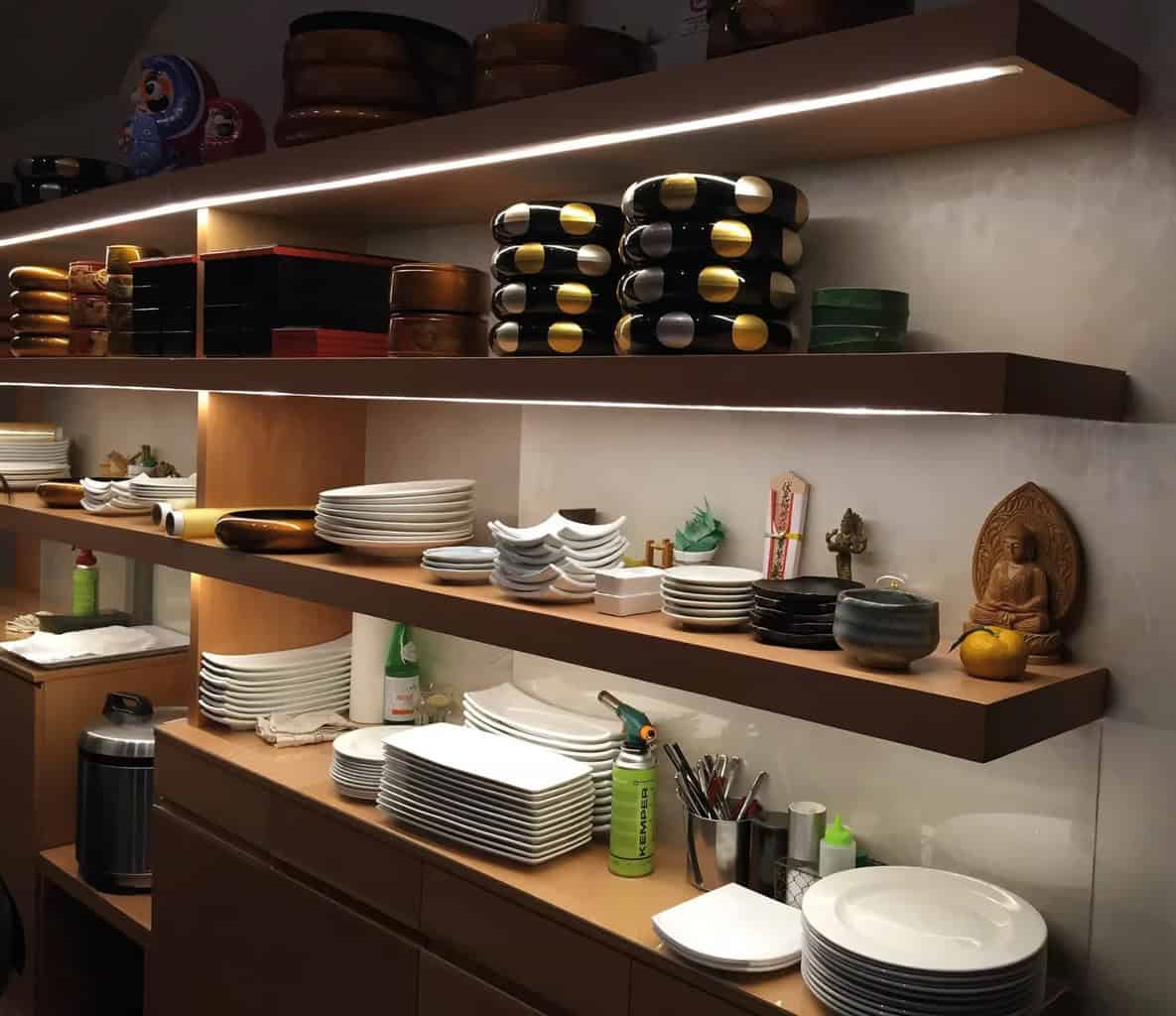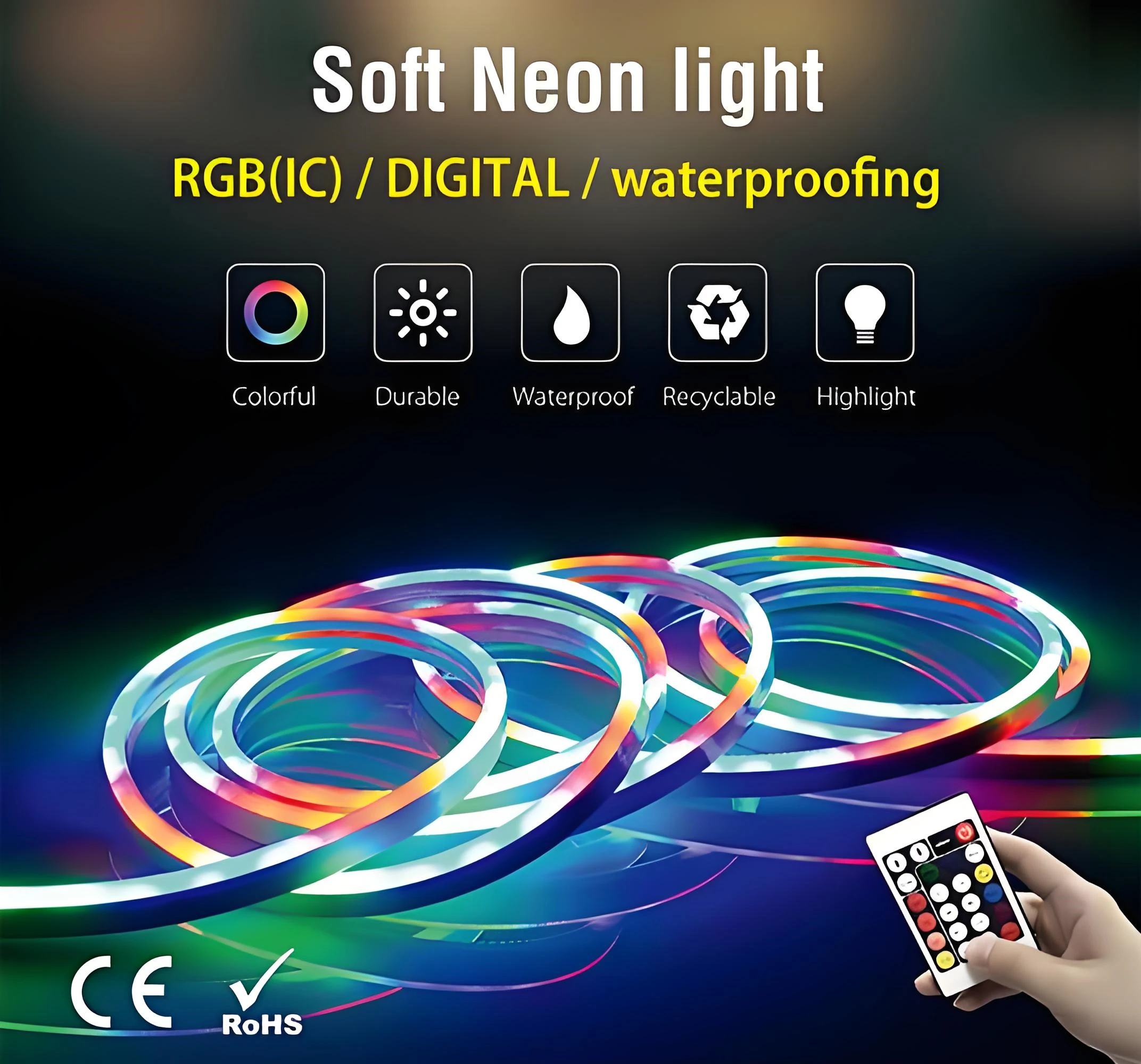For most people, color temperature is a relatively unknown term, but it exists in all aspects of our lives. Like lighting. Pictures. The significance of color temperature is not only to provide information from the light source, but also to affect people’s emotions. Behavior and quality of life.The color temperature of the light source has an important influence on the lighting effect. Different color temperatures will bring different lighting effects and environmental atmosphere.
Select the appropriate light source and color temperature for different environments and needs in order to get the best lighting effect to meet the needs of your different occasions.The following article will take you to understand the color temperature in more detail.
What is LED Color Temperature?
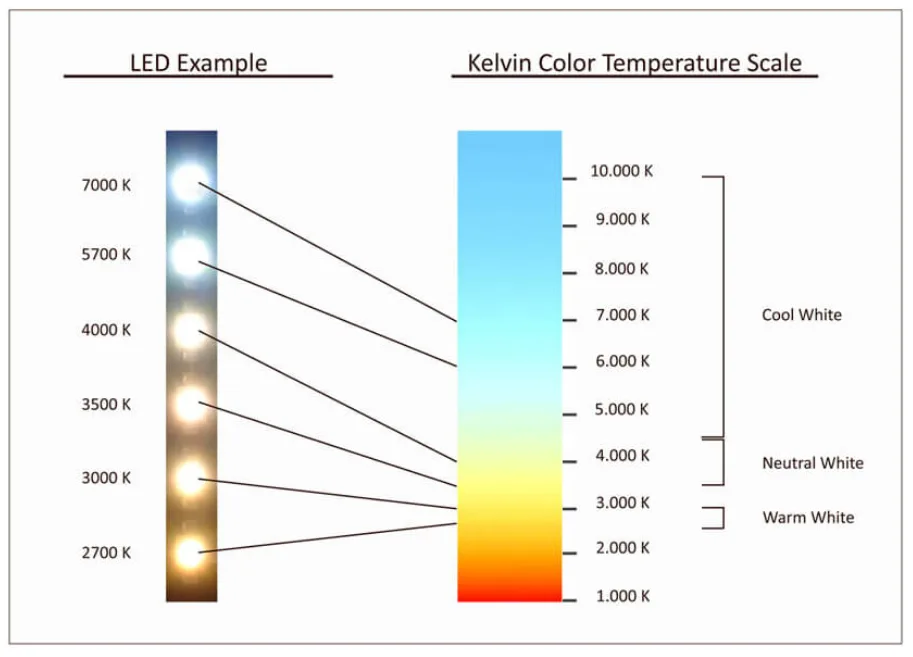
Color temperature is a unit of measurement that indicates the color component of a light. In theory, color temperature refers to the color of the absolute blackbody after heating from absolute zero (a 273 ° C). The black body is exposed to heat. It turns from black to red, yellow, white, and finally blue. When heated to a certain temperature. The spectral component of the light emitted by the blackbody. It is called the color temperature at this temperature, the unit of measurement is “K” (Kelvin), if the light emitted by a light source, and the light emitted by a black body at a certain temperature contains the same spectral composition. It is called a certain K color temperature, such as the color of the light emitted by a 100 W bulb, and the color of the absolute blackbody at 2527K, then the color temperature of the light emitted by this bulb is: 2527K+ 273K=2800K.
Because the correlation color temperature is actually a blackbody radiation approaching the light color of the light source, the evaluation value of the light color performance of the light source is not an accurate color contrast. Therefore, even two light sources with the same color temperature value may still be slightly different in the appearance of light color. The color temperature alone is not able to understand the color rendering ability of the light source to the object, or the reproduction of the object color under the light source.
| Color Temperature | Photochromice | Atmosphere Effect |
| ≥6000K | Cool (bluish white) | A cool atmosphere |
| 4000-6000K | Middle (white) | Warm atmosphere |
| ≤4000K | Warm (white with red) | Sober atmosphere |
What is The Colour Rendering Index (CRI)?
The color rendering index is a number that indicates the color rendering of the light source. It is a measure of the consistency of the color of the object under the light source and the color of the object under the reference light source. CIE defines the Planck radiator as the reference light source, sets its color rendering index at 100, and specifies 8 color samples. If the color of the sample under a light source is the same as that under the reference light source, the color rendering index of the light source is 100; If the color changes, the color rendering index of the light source is less than 100.
The color rendering index of sunlight is defined as 100, and the color rendering index of incandescent lamps is very close to daylight, so it is considered an ideal benchmark light source. The system uses 8 standard color samples with medium chroma to test, compare the deviation degree of the 8 colors under the test light source and the benchmark of the same color temperature to measure the color rendering index of the light source, take the average deviation value RA20-100, with 100 as the highest, the greater the average color difference, the lower the Ra value.
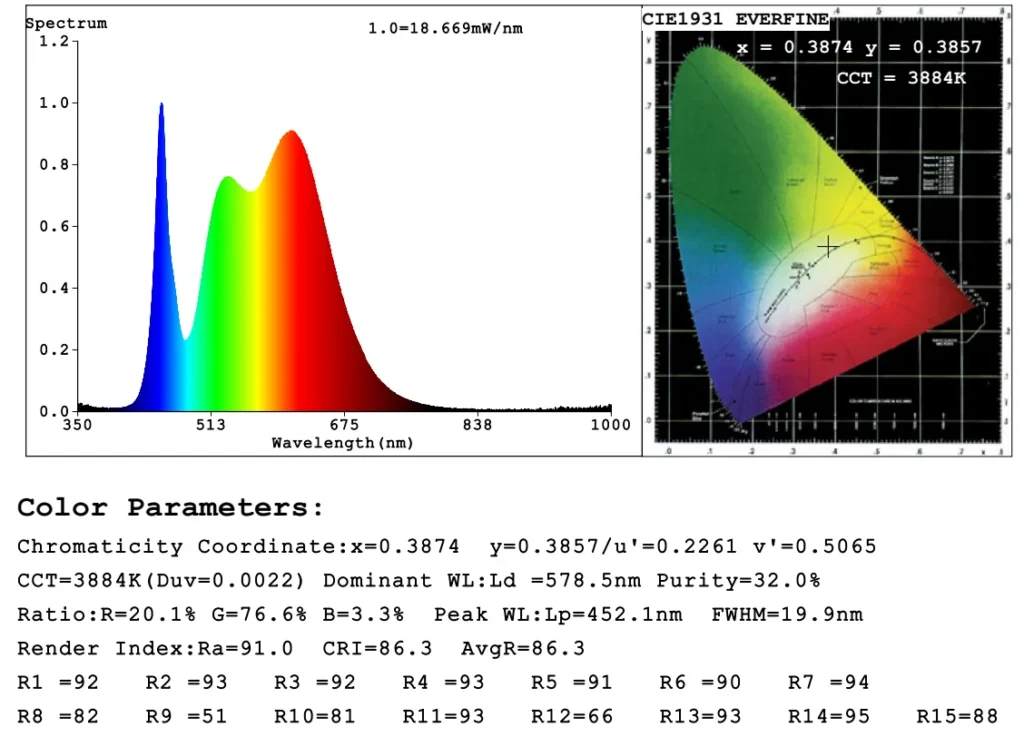
3000K, 4000K, 5000K, 6000K: What is The Difference?

The color temperature of some commonly used light sources is: the standard candle is 1930K (Kelvin temperature unit); Tungsten lamp 2760-2900K; The fluorescent lamp is 3000K; Flash is 3800K; The sun at noon is 5400K; Electronic flash 6000K; The blue sky is 1000-18000K.
During the day, the light color of daylight also changes with time: about 40 minutes after sunrise, the color is more yellow, and the color temperature is 3,000K; At noon the sun is white, rising to 4,800-5,800K, and at cloudy noon it is about 6,500K; Before sunset, the light color turns red, and the color temperature drops to 2,200K.
3000K is a color temperature close to incandescent light, usually called warm white, making people feel relaxed and comfortable, suitable for residential, hotel, restaurant and other lighting places that need to create a warm environment. Color temperature 4000K is a white and soft light; 4000K color temperature strikes a balance between warmth and clarity. It emits light similar to natural light, providing the best contrast, similar to the light of ordinary energy-saving lamps, suitable for families, offices, schools, and hospitals.
5000K is often used to describe the color of a white light source, which emits light that looks very close to natural white, similar to the color of daylight. 5000K color temperature is office. Classrooms, factories, highways, and other places requiring high brightness and high color reproduction. This color temperature increases the alertness and attention of the human eye to light, helping to improve work efficiency and productivity.White light with a color temperature of 6000K has better light transmission, and at the same power, it feels brighter and colder than 3000K or 4000K color temperature products, usually called cold white, which is suitable for Large area lighting in shopping malls, corridors, halls, stations and industrial plants.
If you live in the north where winter is colder, we recommend using warm white light (4000K) or (3000K) products. However, if it is used for reading and learning, it is best to choose positive white light (6000K) products; not only is the brightness feeling high, but it is also suitable for the reading environment mainly based on black and white tones. Of course, from the point of view of home lighting, but also consider the color of the furniture in the home, the style of decoration, and the owner’s personal preferences. Generally speaking, incandescent light gives people a retro warm tone visual feeling, while positive white products are in line with modern simple decorative style.

How to Choose Between 3000K, 4000K, 5000K and 6000K?
With so many options for the color temperature of your lamps, buying LED lights can seem challenging. Whether you need cool, neutral, warm, or adjustable leds depends on how you use them, where you are, and how your application needs to look and feel.
In the past, there were few color temperature options. This is because older incandescent and halogen lamps are warm white.Now, however, in addition to less efficient incandescent and halogen bulbs, LED lighting on the market is also maturing. Each lighting product has a range of color temperatures to choose from.
You can choose the color temperature that best suits the room or task. You can buy a light fixture in a warm, neutral, or cool color, or if you buy a smart LED light fixture, you can change the color temperature (among other things) with a smartphone app.
How to choose the right color temperature for your home or project will be a icing on the cake process. you are still hesitating and don’t know how to choose, here is a detailed look at the importance of color temperature, which may guide you to make the right choice.
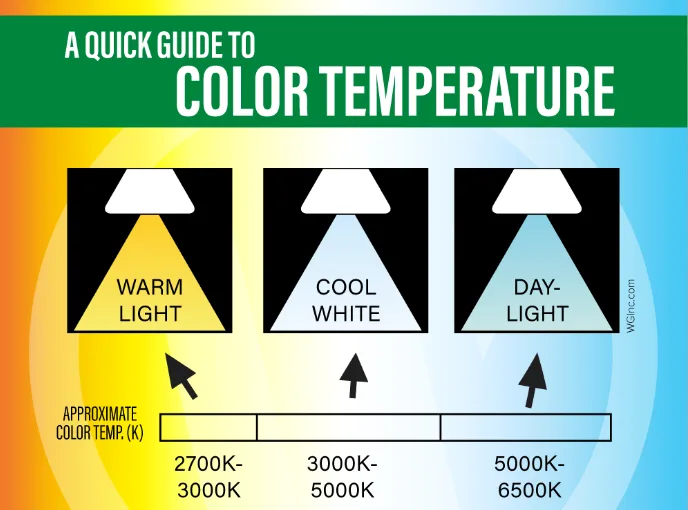
Effect on Mood
Lights that are warm trigger the production of melatonin in our bodies. It is a hormone that regulates our sleep cycle; thus, sitting in such a lighting situation would set the mood for good sleep. The 3000K lights produce such lighting conditions, which makes them suitable for areas like bedrooms and living rooms where you want to relax.
On the other hand, the brighter lights trigger the production of Serotonin which makes the mood energetic. You would be able to focus much better in such lighting conditions. Thus, these lights are appropriate for the areas where you would be working the most.
Application Scenarios
In addition to setting the mood and highlighting the interior, lights have another vital role: utility. Different places in the house have varying lighting needs. Areas such as garages have higher lighting needs because there is work to be done there. In these areas, you would be better off with brighter lights, which makes 4000K a natural choice. The more luminosity would allow you to focus and observe the objects more clearly.
3000K lights are not as bright as the 4000K and would be better in places where you typically relax and do not carry out the daily chores. In areas like the living room, it would provide the lighting it needs while maintaining its aesthetics and producing a relaxed mood.
Health Factor
While selecting the lights for the home, take the health of residents into account as well. People who experience strain on their eyes under direct sunlight should avoid brighter lights such as 4000K. The lights work the same as the Sun; the more colorful they get, the more strain they will produce on the eyes.
That said, the concerns related to blue light emitted by 4000K are greatly exaggerated. It lies on the whiter spectrum and does not threaten the eyes. In contrast, they are making a decision based on health factors in the luminosity of these lights. And if you are okay with it, they have no other harm.
Interior of The Home
The home’s interior should be considered while selecting the appropriate lighttemperature. While the 4000K lights generally look excellent in Kitchen and Washroom, it might not always be the case. The brighter colors will not highlight the aesthetics if your kitchen has wooden cabinetry and interior. Hence, opting for the 3000K lights might be a better choice in these cases. But if the home has a surface kitchen with white-coloured cabinets, the 4000K lights have no competition.
| Colour description | Kelvin range | Appearance | Typical uses |
| Warm White | 2700K to 3,300K | a soft, warm light similar to traditional incandescent and halogen bulbs | Suitable for living rooms and bedrooms |
| Cool White | 3300K to 5300K | a neutral light | Suited to studies and kitchens, and for task-based applications such as kitchen benches, garages and workshops |
| Daylight | 5300K to 6500K | can appear harsh, unrelaxed and even sterile | may be suitable good for bathrooms and laundries |
3000K vs. 4000K: What are The Differences?
He basic difference between 3000K and 4000K lights is shown in the table but the devil lies in the details. So, let’s take a look at the differences in detail.
| Temperature Color | 3000K | 4000K |
| Color | Warm White | Cool White |
| Ideal For | Bedrooms and Living Rooms | Workplaces & Outdoor Lighting |
| Feel | Cozy | Vibrant |
The most apparent difference between the light types is the color temperature. As discussed earlier, the 3000K lights exhibit a warm white color, whereas 4000K lights lie on the cooler side of the spectrum.
The 3000K light would be ideal for the areas that require a natural light finish. If your home has an earthy tone, the 3000K will highlight its essence. Furthermore, the 3000K LED lights are on the whiter side of the spectrum. They offer a yellower and warmer color similar to an incandescent bulb. Hence, some people may also prefer this range if they look for a traditional look.
On the other hand, the 4000K color temperature looks perfect in areas with a white-coloured interior. It does not just offer more brightness but also highlights elements in the interiors, such as cabinetry in the kitchen and washrooms. Furthermore, 4000K lights also reflect on the white surface inside the house, which makes it look more appealing. That said, it is not recommended to use in homes with earthy or woody tones.
The 4000K lights are not too bright and do not pose the harm associated with blue light. Such lights would look incredible in kitchens, living rooms, and bathrooms, especially those with an aesthetic setting.
Now that you know the fundamental differences between the two let’s look at the factors that would decide which would fit the best in your home. The significant difference between them is the color, which ultimately comes down to personal preferences. But it would help if you were mindful that different colors trigger various reactions in our bodies. And it must be considered while you are selecting the lighting for the home.

4000K vs. 5000K – A Comparison for Better Understanding
If the color temperatures between 2,700K and 3,300K are warm white, then 4,000K is slightly less yellow than those. You can consider the 4,000K light as a natural white with tiny yellow tinge.4,000K lighting looks very natural and clean, similar to daylight. Hence, we see this color temperature in homes, offices etc. where people need clear lighting without any blue tint.While 4,000K looks like neutral white, with 5,000K color temperature, the lighting starts to show its blue tint. 5,000K lights are bright and clean but without any hint of yellow.At 5,000K, the light appears almost white and as a result, it shows the true colors of objects it falls on. This is the reason you find 5,000K lighting to showcase art.4,000K Lights have a slightly warm color tone while 5,000K Lights have neutral white with a hint of blue. Beyond 5,000K, the blue tint dominates the light and hence, we do not recommend going above 5,000K for reading or working for long hours.Due to its slightly warm color tone, we can use 4000K lighting in our living rooms, office rooms and even in kitchens. Coming to 5000K lighting, due to its natural white tone, you can use this lighting in bathrooms, powder rooms etc.
| Temperature Color | 4000K | 5000K |
| Color | Warm White | Cool White |
| Ideal For | Kitchen,Offices,Retail Spaces,Garages | Art Galleries,Showrooms,Sports Stadiums,Healthcare Institutions,classroom |
| Feel | Cozy | Energizing |

5000K vs. 6000K – LED Lighting Comparison
Although both 6000K and 5000K fall into the category of cool white lights, 6000K exhibits a more noticeable blue hue, whereas 5000K emits a pure white light.
5000K LED lighting produces a soft pure white light that is slightly milder than 6000K while maintaining brightness and clarity. This color temperature is often associated with a harmonious and comfortable environment, making it suitable for a variety of applications.The neutral colour of 5000K lighting aids in the accurate and appealing display of products, enhancing the shopping experience for customers. In office environments, 5000K LED lights contribute to a productive, focused atmosphere while minimizing eye strain and fatigue.
The primary contrast between these two colour temperatures lies in their visual attributes. 6000K LED lights emit a cooler, bluish-white light, whereas 5000K LED lights provide a well-balanced, neutral white light.Emitting a cool white light, 6000K LEDs possess a faint blue hue, which can contribute to a contemporary and pristine visual ambience in diverse environments.
The primary contrast between these two colour temperatures lies in their visual attributes. 6000K LED lights emit a cooler, bluish-white light, whereas 5000K LED lights provide a well-balanced, neutral white light.
| Temperature Color | 5000K | 6000K |
| Color | Day white | Cool white |
| Ideal For | Art Galleries,Showrooms,Sports Stadiums,Healthcare Institutions,classroom | Workspaces,home offices,garages |
| Feel | Energizing | Cold and sterile |
Whether CCT Adjustable Color Temperature is a Better Option?
CCT adjustable lights allow you to switch the color temperature as per your choice. You can also choose LED lights to imitate the natural pattern of sunlight with some options. The best part about these lights is that you can switch from 3000K to 6500K whenever possible. Hence, You can use these lights in all aspects of the home without putting much thought into them. The liberty of changing temperature allows you to set whatever mood you want.
That said, quality CCT adjustable lights might cost slightly more than traditional LED lights. So, if you are running on a budget, consider them only for specific areas. These areas could be where you are unsure about the ideal light temperature.
Conclusion: The applications for each color temperature vary significantly. 3000K is ideal for creating a cozy, relaxing atmosphere in bedrooms and living rooms. 4000K lights are more suited for workplaces, garages, and outdoor lighting, where bright and focused light is needed. On the other hand, 5000K is perfect for office spaces, commercial applications, and task lighting, where maximum brightness and clarity are required.Higher color temperatures 6000Kare commonly used in industrial applications, warehouses, parking lots and outdoor areas. The lighting provided by cold white and blue white helps improve visibility, safety and security, thus making it ideal for workspaces and locations that require high brightness levels.
